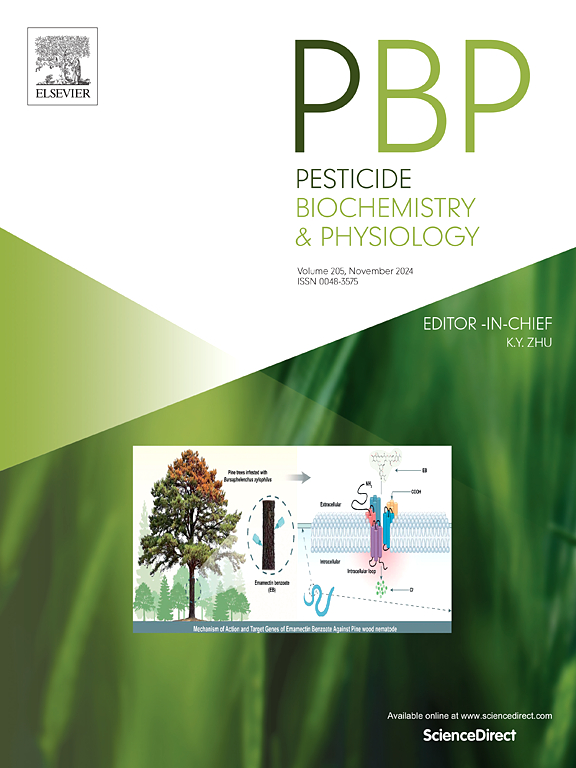Confirmation and characterisation of ALS inhibitor resistant Poa trivialis from Ireland
IF 4.2
1区 农林科学
Q2 BIOCHEMISTRY & MOLECULAR BIOLOGY
引用次数: 0
Abstract
Relying on one broad-spectrum product to control grass weeds has resulted in cases of resistance to acetolactate synthase (ALS) inhibitors in species that were not the primary target such as Poa trivialis (POATR), in wheat fields in Ireland. In this study, we have characterised ALS inhibitor resistance in two populations of POATR-R, suspected of being resistant, to (i) sulfonylurea (SUs)-mesosulfuron + iodosulfuron (the selecting agent), (ii) SU + sulfonylamino‑carbonyl-triazolinone (SCT)-mesosulfuron + propoxycarbazone, and (iii) triazolopyrimidine (TP)-pyroxsulam ALS chemistries. Resistant POATR-R populations showed ALS inhibitor cross-resistance associated with target-site resistance (TSR) mutations. Combined mutations (Pro-197 and Trp-574) were found in POATR-R plants; Trp-574-Leu in POATR-R1 conferring greater SUs, SU + SCT and TP (resistance index, RI >214) resistance, while Pro-197-Thr in POATR-R2 (RI >37) was associated with less resistance. The high levels of ALS inhibitor cross-resistance in POATR-R populations caused by TSR mutations are consistent with the ploidy status, as cytogenetic tests revealed that both the R and S populations were diploid (2n = 2× = 14). Cytochrome P450 inhibitor assays did not detect metabolism-based ALS resistance in POATR-R. Alternative herbicide modes of action, including acetyl-CoA carboxylase (pinoxaden, fenoxaprop, propaquizafop, cycloxydim or clethodim) and 5-enolpyruvylshikimate-3-phosphate synthase (glyphosate) inhibitors applied at the recommended label rate were highly effective on these resistant populations. Residual herbicides and cultural methods, as well as the judicious use of alternative in-crop herbicide options, should be prioritized as sustainable options for managing these ALS-resistant populations. This is first worldwide characterisation of resistance mechanisms in P. trivialis to ALS inhibitor chemistries.

求助全文
约1分钟内获得全文
求助全文
来源期刊
CiteScore
7.00
自引率
8.50%
发文量
238
审稿时长
4.2 months
期刊介绍:
Pesticide Biochemistry and Physiology publishes original scientific articles pertaining to the mode of action of plant protection agents such as insecticides, fungicides, herbicides, and similar compounds, including nonlethal pest control agents, biosynthesis of pheromones, hormones, and plant resistance agents. Manuscripts may include a biochemical, physiological, or molecular study for an understanding of comparative toxicology or selective toxicity of both target and nontarget organisms. Particular interest will be given to studies on the molecular biology of pest control, toxicology, and pesticide resistance.
Research Areas Emphasized Include the Biochemistry and Physiology of:
• Comparative toxicity
• Mode of action
• Pathophysiology
• Plant growth regulators
• Resistance
• Other effects of pesticides on both parasites and hosts.

 求助内容:
求助内容: 应助结果提醒方式:
应助结果提醒方式:


